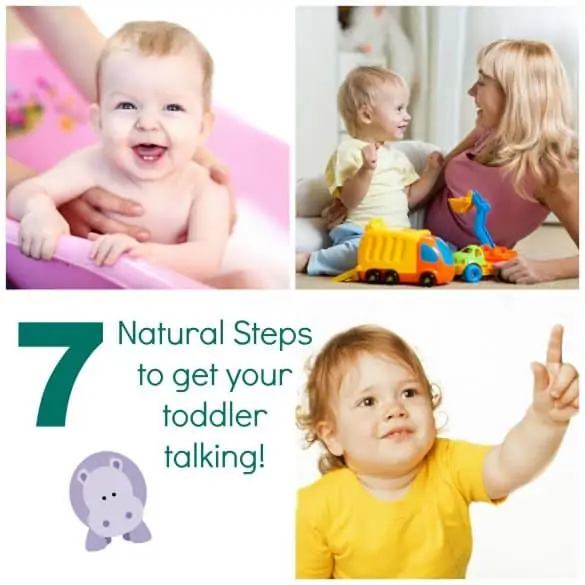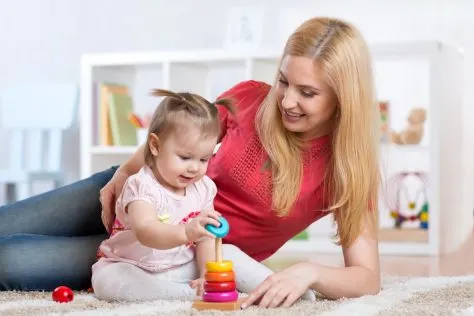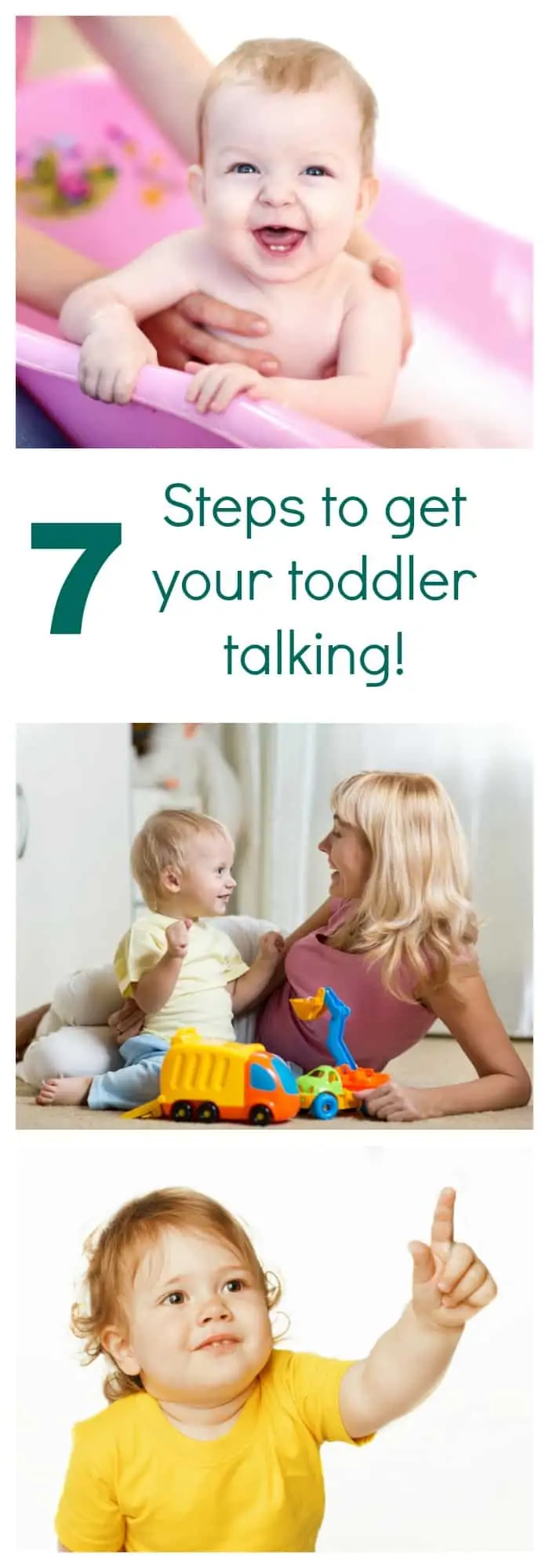We all look forward to hearing our babies say their very first word. My baby’s first word was “cheese”. Random, I know, but he loves cheese so it was very motivating for him to learn the word! But what if that first word doesn’t come? Or what if your toddler is not expanding his vocabulary? I worked for several years in early intervention with toddlers who had delayed speech and these are some of the tips I gave parents to help create communication opportunities in their home.

-
- Narrate what you are doing. This is something you can do with your baby at a very young age. If you are giving him a bath, talk about the steps in the routine (i.e. Let’s fill up the tub. First, let’s wash your hair. More soap. Next your nose and ears. Scrub. Scrub.). Once they get a little older, you can narrate what they are doing (i.e. You found a ball! Throw the ball. Pick up the ball. Drop the ball.). Think of yourself as a sports announcer giving the play-by-play of what is happening. Babies start to understand language long before they start talking and that is why it is important to have an ongoing dialogue with your baby so they can start picking out sounds and words.

- Don’t anticipate your child’s needs. As a parent, you know your child pretty well and can tell what they want before they even make it known to you. For example, if your child is used to drinking a sippy cup of milk right after a nap, you may just get in the habit of giving it to him right after nap time. Don’t do this! Instead try waiting and see if he tries to communicate that he wants milk on his own. Require him to request either by pointing, signing, or saying “milk”.

- Offer choices and wait. Toddlers love to have choices. It gives them a sense of control. It also gives them an opportunity to communicate. For example, you could say “Do you want juice or milk?”. Then wait 5-10 seconds for a response. This will seem like an eternity but trust me on this! They may communicate by pointing or saying the word. You could even get them to imitate the beginning sound of the word if they’re not quite ready to say the whole word. If your child knows the word but is not saying it, you can prompt them by saying, “You can say…” and then wait several seconds before saying the word

- Fill in the blank. During a familiar song or book, pause on a word and see if your child will fill in the blank. For example, you could start singing, “Twinkle, twinkle little… (pause)… star.” You can also do this with a fun phrase or familiar routine. For example, when racing toy cars you could say, “Ready, set… (pause)… go!” Look at them with anticipation before saying “go” and see if they say it on their own.

- Play dumb and mess up routines. Play “dumb” when your child points to a desired object. For example, when your child points to their drink on the counter and you know they want a drink, say, “What do you want?” (pause) “An apple?” (pause) “A fork?” (pause) “A drink?” … “Oh, drink!” This way, kids will learn that when they say what they want, they get what they want faster. Some examples of messing up routines could be giving everyone at the dinner table a spoon except for your toddler and see if they try to initiate something. If they don’t initiate anything, you can prompt them by saying, “What do you need?” or “Are you missing something?” Then label the item before giving it to them. Getting dressed is also a perfect time to mess up a routine. Try forgetting the shirt or putting a sock on a hand and see if your child ties to correct you.

- Sabotage the environment. Set up the environment so your child has to ask for help. For example, put a favorite toy within sight but out of reach (on a high shelf) so they have to ask for it. Another thing you could try is putting food or toys in a plastic container or ziplock bag and then giving it to the child. Wait and see if they try to ask for help. If they hold it out for you to do it, respond by saying, “Oh, do you need help? You can say “help” (or sign “help”)”. This is great for fruit snacks. Give them an unopened package and see if they try to communicate that they need help to open it.
- Parent speech. Use clear simple speech during play or routines with your child. You want to model the level they are at so use 1-2 word phrases. Don’t do this all the time. They still need to hear normal phrases as well. For example, instead of saying, “Go down the stairs and get your shoes” say “Get shoes.” Or if your’e playing with a ring-stacking toy, you could say “Ring on. Ring off. Blue ring.”
- Narrate what you are doing. This is something you can do with your baby at a very young age. If you are giving him a bath, talk about the steps in the routine (i.e. Let’s fill up the tub. First, let’s wash your hair. More soap. Next your nose and ears. Scrub. Scrub.). Once they get a little older, you can narrate what they are doing (i.e. You found a ball! Throw the ball. Pick up the ball. Drop the ball.). Think of yourself as a sports announcer giving the play-by-play of what is happening. Babies start to understand language long before they start talking and that is why it is important to have an ongoing dialogue with your baby so they can start picking out sounds and words.
This post may contain affiliate links. As an Amazon Associate I earn from qualifying purchases. For more information, see our disclosure.
Hopefully this gives you some ideas of how to create communication opportunities and get those toddlers talking!
Erica is a speech pathologist for North Lake Pediatric Speech.
